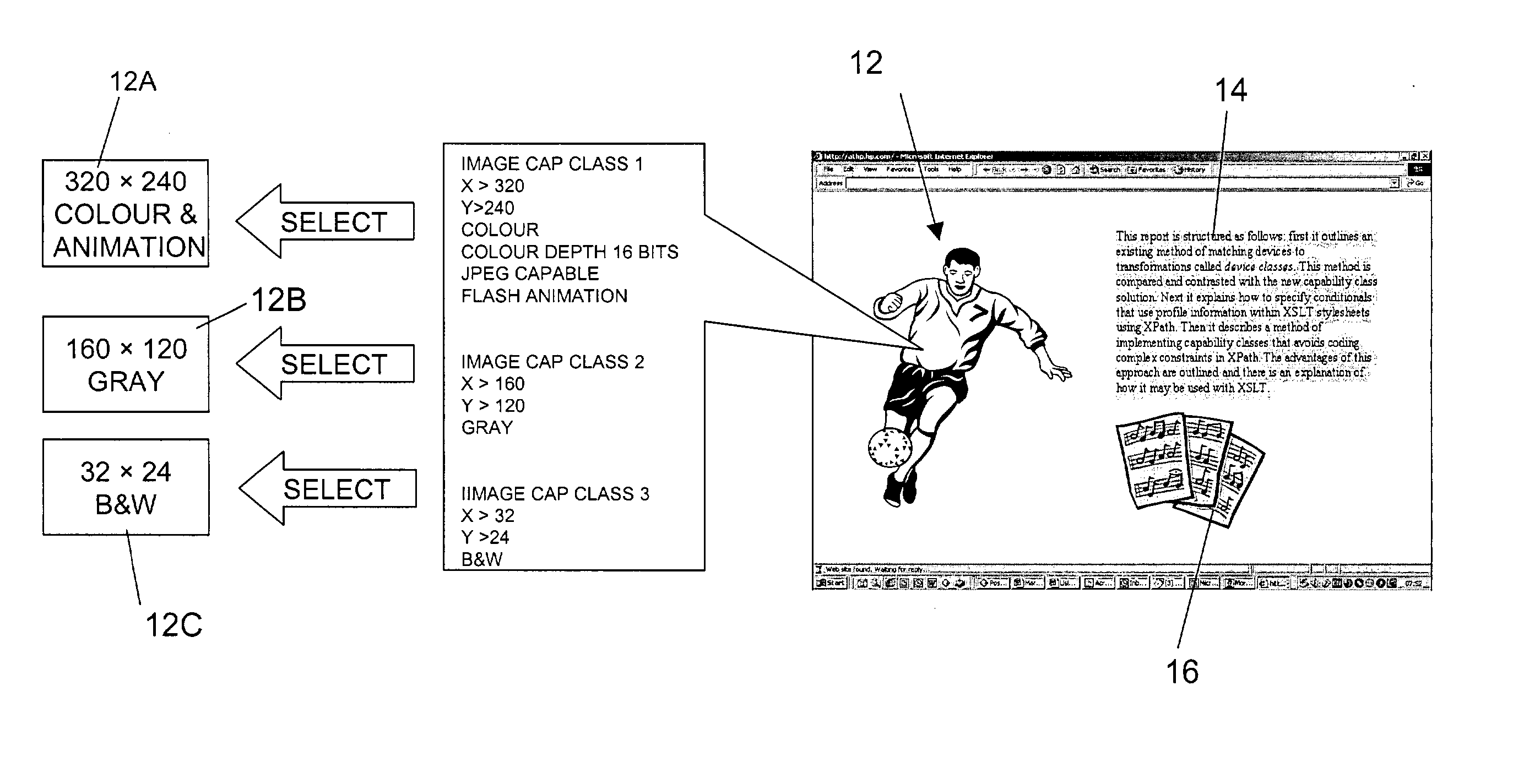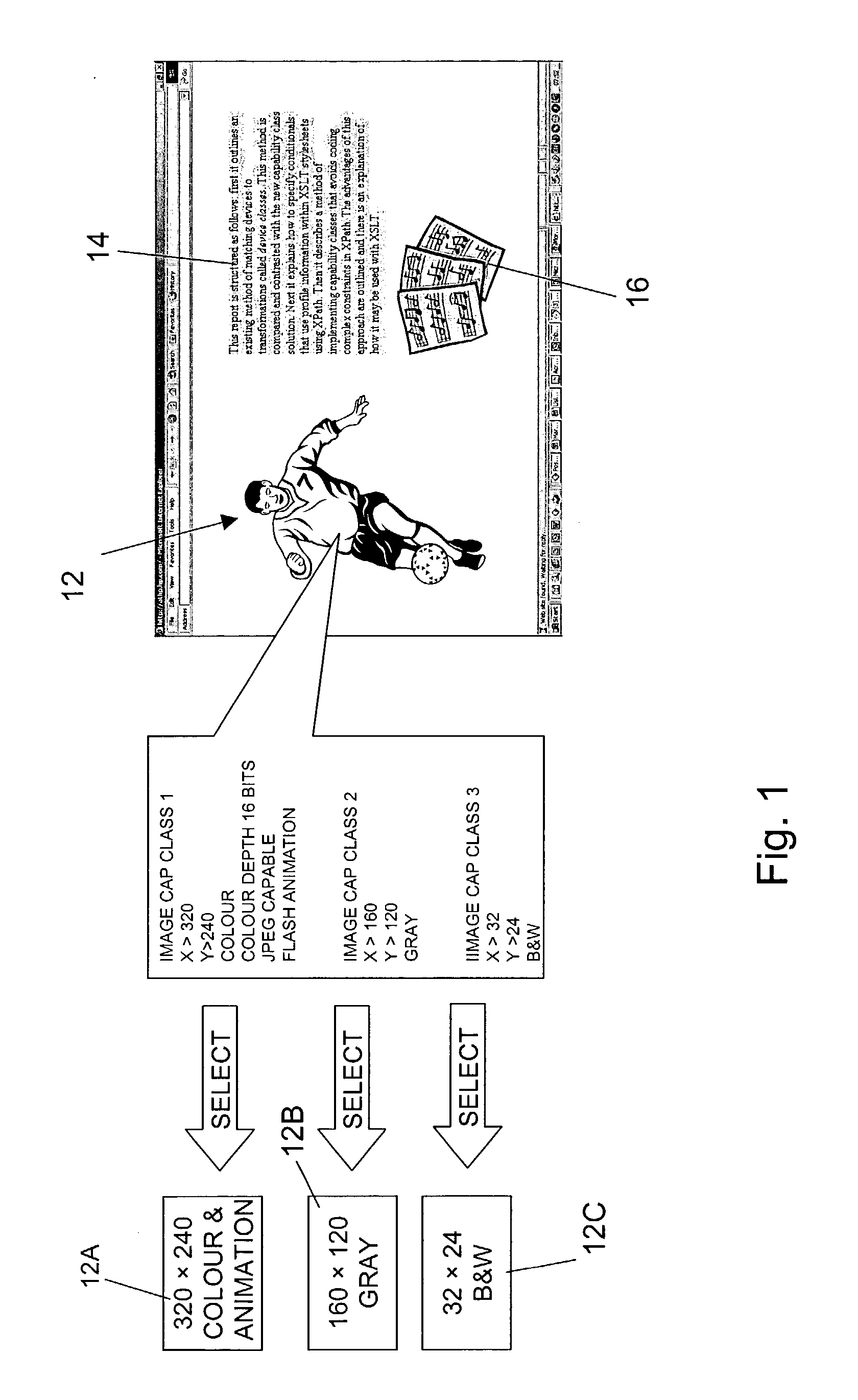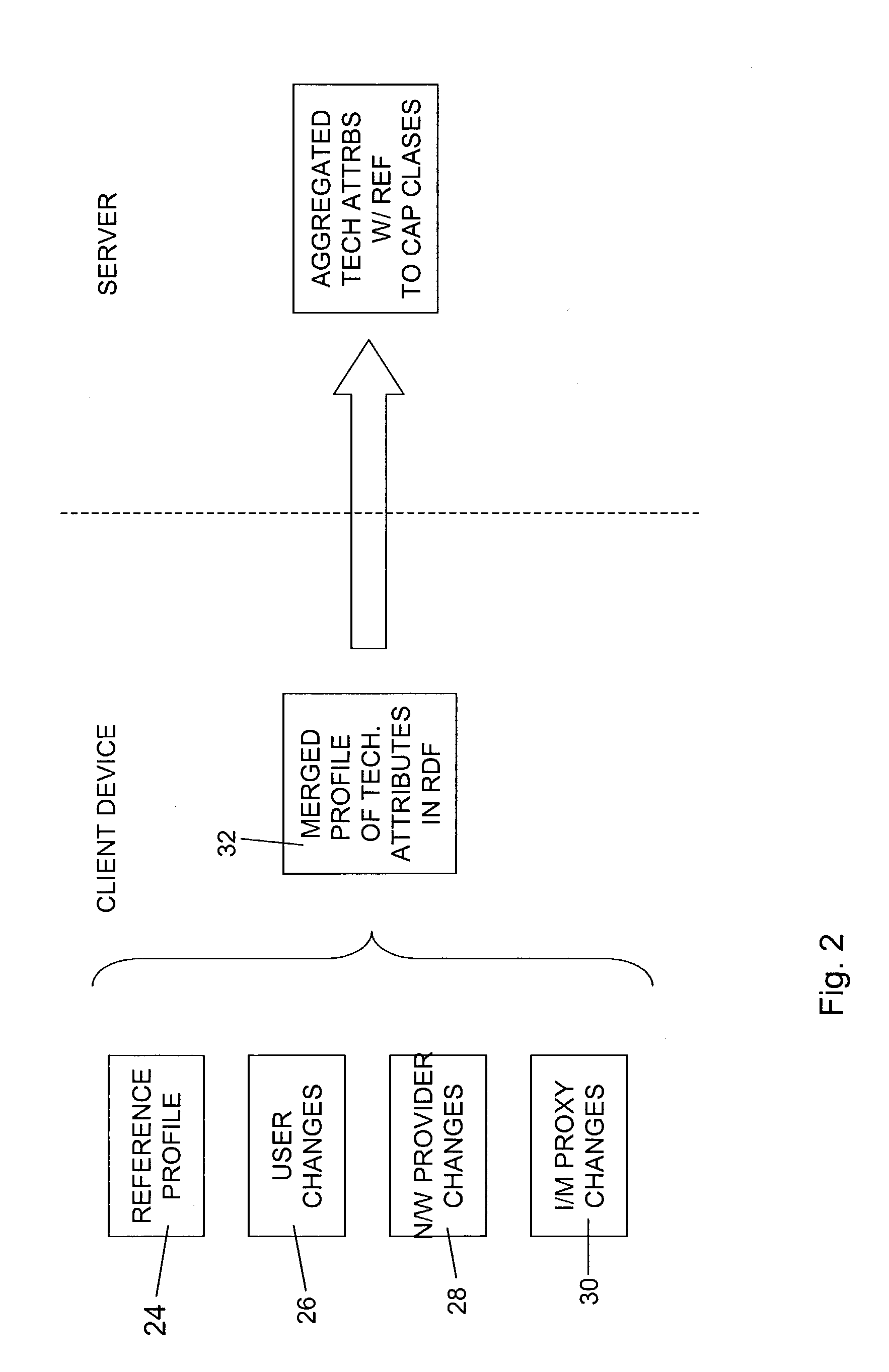Provision of content to a client device
a client device and content technology, applied in the field of authoring material, can solve the problems of inability to meet the needs of users, no widely accepted method of overcoming, and the rapid difficulty of managing the approach of the device class, and soon the impracticality of employing the device class
- Summary
- Abstract
- Description
- Claims
- Application Information
AI Technical Summary
Benefits of technology
Problems solved by technology
Method used
Image
Examples
Embodiment Construction
[0020] Referring now to FIG. 1, a web page 10 comprises three components or elements of content: an image 12, text 14, and sound 16; a component of content may be thought of as being a piece of content which is capable of independent manifestation, manipulation or other processing (although this is not intended to be an exclusive definition). Considering initially the image 12 in detail, in order to enable manifestation of the image by a range of client devices, that is to say client devices having differing technical capabilities, the web page 10 is configured to make available different versions of the image, and in the present example these different versions are provided simply in the form of alternate images. The alternate images and their attributes are schematically represented in FIG. 1 as: an image 12A, which is a colour image in Joint Photographic Experts Group ("jpeg") format of size 320.times.240; image 12B: a grey image of size 160.times.160; and image 12C: a black and ...
PUM
 Login to View More
Login to View More Abstract
Description
Claims
Application Information
 Login to View More
Login to View More - R&D
- Intellectual Property
- Life Sciences
- Materials
- Tech Scout
- Unparalleled Data Quality
- Higher Quality Content
- 60% Fewer Hallucinations
Browse by: Latest US Patents, China's latest patents, Technical Efficacy Thesaurus, Application Domain, Technology Topic, Popular Technical Reports.
© 2025 PatSnap. All rights reserved.Legal|Privacy policy|Modern Slavery Act Transparency Statement|Sitemap|About US| Contact US: help@patsnap.com



